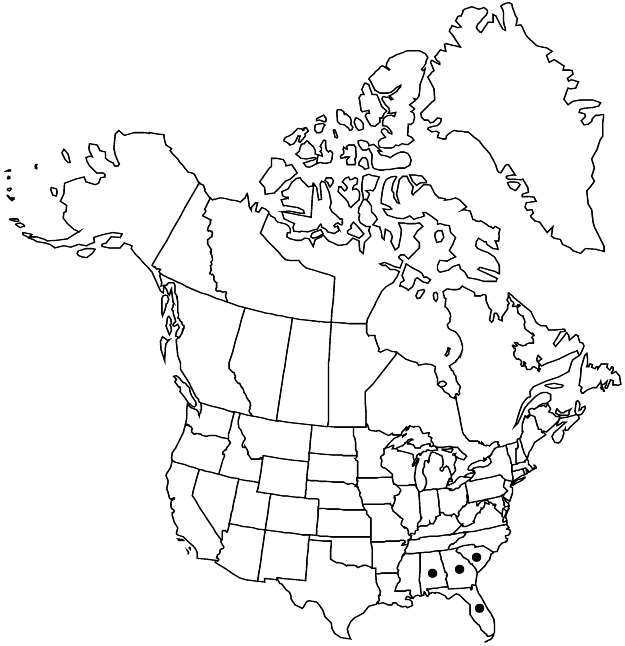Paronychia americana
Repert. Bot. Syst. 1: 262. 1842.
Plants annual or biennial; taproot slender. Stems erect or ascending to prostrate, branched, 5–60 cm, often retrorsely pubescent on 1 side. Leaves: stipules ovatelanceolate, 1.5–7 mm, apex acuminate, fimbriate; blade spatulate to oblanceolate or linear-oblanceolate, 3–20 × 1–4 mm, herbaceous, apex acute to obtuse or rounded, glabrous to scaberulous. Cymes terminal, 9–25-flowered, ± compact, forming spheroid glomerules 2–6 mm wide. Flowers 5-merous, ± short-cylindric, with slightly enlarged hypanthium and calyx widening somewhat distally, 1–1.8 mm, sparsely to moderately pubescent proximally with hooked to straight hairs; sepals redbrown (sometimes finely striped or mottled), white distally, midrib obscure, obovate, 0.4–0.8 mm, leathery to rigid, margins white, 0.03–0.1 mm wide, thinly herbaceous, apex broadly rounded, hood broadly rounded, awn or mucro usually absent or minute; staminodes narrowly triangular, 0.3–0.4 mm; style 1, cleft in distal 1/6, 0.6–0.8 mm. Utricles ovoid to ellipsoid, 0.6–0.8 mm, smooth, glabrous.
Phenology: Flowering year round.
Habitat: Dunes, pine/oak woodland, fields, clearings, roadsides
Elevation: 0-300 m
Distribution

Ala., Fla., Ga., S.C.
Discussion
Plants of Paronychia americana with fewer flowers in lax cymes from Florida and Georgia were named subsp. pauciflora, a distinction that we do not feel is worth recognition.
Selected References
None.
Lower Taxa
"widening" is not a number."/10" is not declared as a valid unit of measurement for this property. "/10" is not declared as a valid unit of measurement for this property.